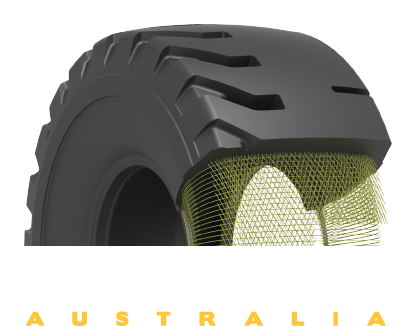TyreInfo
Loss Reduction not Cost Reduction.
Adam Gosling - Monday, September 07, 2015
Much capital is wasted in procurement chasing lowest cost options. Procurement gain most of their kudos and KPI’s through buying at reduced costs, however cost reduction invariably ends up with increased losses. This seems counter intuitive but consider that most procurement departments know little if anything of actual operations. A holistic view must be engaged if loss reductions are achieved.
A premium tyre may not always provide a lower cost per kilometre outcome but performance can never be judged on purchase price alone. Can your fleet managers put hand on heart saying, “my tyres cost me X cents per kilometre to operate” with facts supporting this statement?
Scientific studies have shown that low cost tyres often have increased rolling resistance. This is a result of the design and construction of the low cost tyre, there is a reason they are low cost. R&D is never cheap. Sure, there was a little money saved in the tyre’s purchase price and while procurement achieved their KPI’s the fleet’s fuel bills increased, tyre service costs increased, availability fell as tyres failed prematurely and the operations department costs increased.
Who cares about tyres? For most transport operations, tyres are usually the next cost to fuel. If a company was to receive only 750 ml of fuel for every litre paid for the board would be in uproar, yet willingly accept tyres only yielding 75% expected life, this seems to go unnoticed.
Companies have HR departments managing the requirements and expectations of the workforce, highly skilled knowledgeable personnel improving the mechanical maintenance of the equipment. Tyres, on the other hand, are often outsourced to suppliers (whose aim is to sell tyres) or shoved forgotten down the back corner. When a tyre management plan is suggested, scorn is the usual response
A tyre relates it’s life to a trained observer. The standard of vehicle maintenance as well as driver habits are exhibited freely on show. Note, “trained observer”, a passionate practitioner armed with knowledge and experience. Isn’t this the same requirement as HR & mechanical maintenance?
The first requirement of a tyre for successful operation is inflation pressure, its common knowledge that a flat tyre doesn’t go far, few seem to realise a properly inflated tyre provides long service and the expected level of safety? Without adequate pressure maintenance tyres will not provide the expected performance.
Some companies suggest that all tyres are checked before the vehicle leaves for a journey that may not see the vehicle return until the next periodic maintenance service is scheduled. How are the tyres checked during the interim? Traditionally the driver will thump the tyres during rest breaks, verifying that the tyres are not flat or grossly under inflated.
How are tyres checked during the 3 – 5 hours on the move? Unless there is a tyre pressure monitoring system fitted, they’re not! Tyres do not all react in the same manner. Detailed logs of operating tyre pressures have shown that tyres in different positions on the vehicle react in different ways. One of a dual pair may be hot, an axle group may be hotter because the alignment is out of spec, a dual pair may be hotter as the wheel bearings are on the way out or a brake is dragging.
Dual tyres usually do not operate at the same pressure, this is why they are derated by the tyre and rim associations, however cold pressures are usually set to the same level. Why? Because it’s easier that way, we prefer to throw money away because it’s easier.
Understanding what tyres are experiencing in real time is the fundamental key to loss reduction. If you can’t measure it, you can’t improve it. You can’t measure tyre pressure by thumping the tyre with a bar.
Using real time pressure monitoring you can understand how your tyres are actually performing. A loss reduction strategy involving tyre pressure monitoring can provide substantial gains in just tyre performance, without mentioning fuel, rotating equipment life even driver fatigue.
Tyre companies publish volumes of data on how under inflation affects tyre life and fuel consumption. Many fleets study driver habits in order to reduce fuel consumption yet for a fleet with poorly maintained tyres there is a potential 5% savings in fuel alone that can be made. ECU data is reviewed and filtered, driver scorecards raised but no one has considered tyres.
The kudos gained by procurement for purchasing a low cost item may return with a venomous bite. If operating costs increase it could be the few percentage point difference between a profit and loss, in safety terms it may well be the survival of your employees as well as your business and reputation.
What is your loss reduction strategy? The lowest hanging fruit is managing tyre pressures. It’s ripe for picking in the majority of transport operations. Will you continue to ignore this opportunity to reduce your losses?
